ASI Grand Stereo amplifier and Liveline Preamplifier

 It’s been some time since Franck Tchang of Acoustic System International (ASI) has looked this excited. Tchang, who is better known around these parts as the “The Resonator Man,” compliments of his Acoustic Resonators tuning devices is quite a busy man of late. It was only shortly after the success of the Acoustic Resonators before Tchang released his ASI Liveline series of cables. And it wasn’t long after that before he introduced his ASI model Tango loudspeaker (that I along with many others in the press have grown quite fond of). Most recently, Tchang released a new line ofhigh-end electronics under the ASI umbrella too. It was at the Munich High End 2011 show where, I first spotted Tchang excitedly (as expected) putting on an excellent demo. This time, however he wanted my attention on the near-unlimited power of these two huge mono amplifiers. It was only after listening for an extended period did I come to realize these in fact were his ASI Grand Monoblocks in prototype form. They produced a sense of control and excellent transients out of his (then prototype) loudspeakers which immediately had my attention. Shortly thereafter, I ran bumped into Milan Karan of Karan Acoustics andTchang together. This was where I learned that his new ASI Grand Monoblockswerebeing designed by Mr. Milan Karan himself.
It’s been some time since Franck Tchang of Acoustic System International (ASI) has looked this excited. Tchang, who is better known around these parts as the “The Resonator Man,” compliments of his Acoustic Resonators tuning devices is quite a busy man of late. It was only shortly after the success of the Acoustic Resonators before Tchang released his ASI Liveline series of cables. And it wasn’t long after that before he introduced his ASI model Tango loudspeaker (that I along with many others in the press have grown quite fond of). Most recently, Tchang released a new line ofhigh-end electronics under the ASI umbrella too. It was at the Munich High End 2011 show where, I first spotted Tchang excitedly (as expected) putting on an excellent demo. This time, however he wanted my attention on the near-unlimited power of these two huge mono amplifiers. It was only after listening for an extended period did I come to realize these in fact were his ASI Grand Monoblocks in prototype form. They produced a sense of control and excellent transients out of his (then prototype) loudspeakers which immediately had my attention. Shortly thereafter, I ran bumped into Milan Karan of Karan Acoustics andTchang together. This was where I learned that his new ASI Grand Monoblockswerebeing designed by Mr. Milan Karan himself.
Tchang has been using Karan Acoustics electronics personally for some years and he’s long considered them as amongst the best of the best. Coincidently, I too must concur with Tchang’s sentiments as I have used Karan electronics as my reference for nearly a decade now. Tchang, who built a special relationship with Karan over the years, sole aspiration was to create a benchmark of components for ASI. Tchang believes Karan (the man) is the perfect designer for ASI electronics. Tchang wanted Karan to design thisnew line without boundaries or compromise. In the two years of R&D, Karan completely rethought and redesigned the circuits for ASI electronics. In the process, a stereo version of the ASI Grand Monoblock was born. Again, the new circuit design, power supply and chassis have been redesigned from the ground up using the latest technology available and Karan’s God-given abilities. When Tchang was finally invited to Karan’s home in Novi Sad, Serbia for a final listen he knew his dream had been realized. Of course, you cannot imagine how thrilled I was when I was asked sometime later to review the new ASI Grand Stereo amplifier and Liveline preamplifier.
The Grand Stereo amp and LiveLine preamplifier arrived some weeks later via heavy duty wooden crates. The two crates housing the preamplifier were easy to manage but the Grand Stereo amplifier required extra hands. Wow! Tipping the scales at a hefty 198 lbs, this amplifier was huge, seriously heavy and will require a lot of help setting up! I was very fortunate to get help from my doorman to help me uncrate this monster of an amplifier. Once I accomplished getting situated in my listening room, I sat down, rubbed my back and quietly admired the ASI’s elegant look and finish.
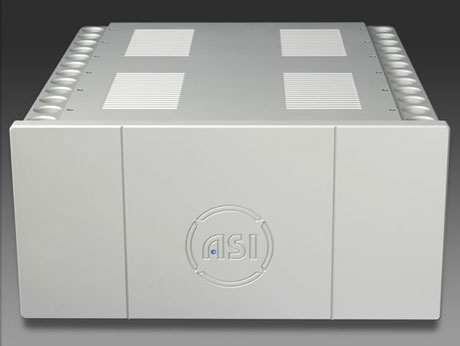
The Grand Stereo is a dual mono and a true balanced design that literally is two amplifiers built into a single chassis (and thus requires two separate AC power cords). Keeping the signal path as short as possible, each output stage of the amplifier employs nine pairs of ultra-fast Sanken bipolar power transistors. As a result, it has a total current capability and instantaneous peak current delivery of 120 Amperes and is a high bandwidth circuit design with a frequency response of an impressive DC-500 kHz
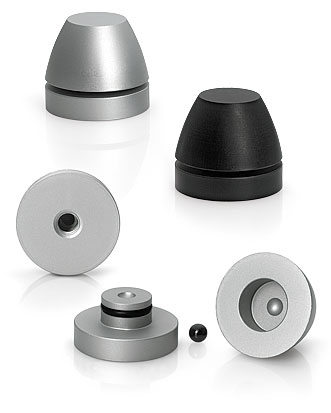
(0/+-3db). The maximum swing voltage is 75V. It’s a powerhouse, producing 650 watts per side into 8 ohms, 1,000 watts into 4 Ohms and 1,800 watts into 2 Ohms with an impressive damping factor of 10,000 into 8 Ohms, 20 Hz – 20,000 Hz (It’s hard to imagine needing even more power, but if you dreamed of such things their Grand Mono delivers an even more remarkable 2,400 watts per side at 8 Ohm with finesse and control). In the Grand Stereo each channel uses a custom made low noise high current 1,800 VA toroidal transformer with 240,000 uf of total capacitance for both channels. They are in a separate aluminum enclosure to isolate and to minimize any bad influences on the audio section. The chassis are made of top notch aircraft aluminum imported from Switzerland. Karan utilized many custom made components, according to his specifications, sourced from Germany. For example, non-magnetic low noise resistors that are 6 dB lower than what are typically used in Karan electronics. Also, newly designed capacitors with lower inductance boast more current and speed.
Cleverly, the Grand Stereo amp operates in Class-A, with what Tchang describes as (floating) active bias mode. Karan explains that the Grand Stereo works unlike any other active bias design. In Karan’s design an electronic circuit monitors the incoming signal and introduces a small amount of bias on the output stage when the circuit is in standby. When a musical signal is detected, the circuit measures the amplitude of signal and opens the output stage (increasing bias) and the current rails on the output transistors instantaneously. This way the output transistors always keep the right amount of current and temperature to maintain the same quality performance with minimum heat and energy loss. Whether played loud or soft, the Grand Stereo always felt warm to the touch. The Grand Stereo also uses zero negative feedback throughout. As noted above, the chassis is finished in meticulously crafted high-quality Swiss aircraft aluminum to help reduce mechanically induced jitter. It’s quieter, more dynamic and open sounding without any compression on the signal as compared to other materials says Karan.To minimize resonances further, Finite Elemente Ceraballs are incorporated as well. There are two AC “Power On” switches on the back of the Grand Stereo, one balanced (XLR) and one unbalanced (RCA) input with two pairs of binding posts for bi-wiring.

The Liveline is a dual mono balanced preamplifier featuring a two-chassis design with an external power supply. Each chassis is made from the same high quality aluminum as the Grand Stereo amplifier and also employs Finite Elemente Ceraballs footers for excellent stabilization. Like the Grand Stereo, the Liveline utilizes many custom-made components according to Karan’s specifications. Sourced directly from Germany, the power supply boasts greater capacitance storage which Karan says “…makes the 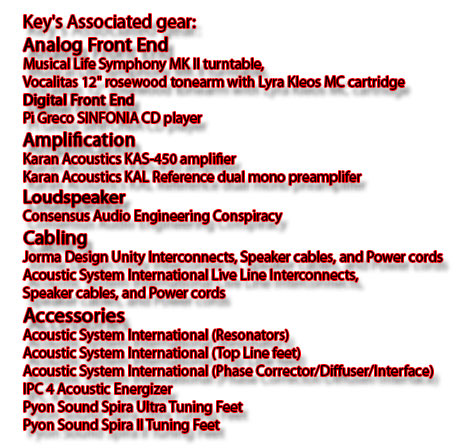 Liveline faster and more transparent.” The Liveline also boasts new “low inductance capacitors” says Karan, which provide extremely high current but, he stressed“the best parts do not always give best result in sound so you must carefully match components that work synergistically with your circuit design.” The Liveline’s new volume attenuator is said to be both more accurate and boast a lower distortion quotient than my beloved Karan preamp. The front panel of the preamplifier features a simple layout design balanced out by way of two rotary knobs between the narrow LED window display. Turning the Liveline to the On position illuminates the ASI logo – located on the separate power supply chassis – in a bright blue glow. The display window provides volume level in dB steps along with input selection. The back panel displays six pair of inputs: 3 XLR and 3 RCA. There are also two sets of XLR outputs (sorry, no RCA outputs). The separate power supply houses both the IEC Power On switch and the Cardas 7-pin umbilical cord which connects both units. Another nice touch is the volume and input selection can be adjusted via a hefty (all aluminum) remote control.
Liveline faster and more transparent.” The Liveline also boasts new “low inductance capacitors” says Karan, which provide extremely high current but, he stressed“the best parts do not always give best result in sound so you must carefully match components that work synergistically with your circuit design.” The Liveline’s new volume attenuator is said to be both more accurate and boast a lower distortion quotient than my beloved Karan preamp. The front panel of the preamplifier features a simple layout design balanced out by way of two rotary knobs between the narrow LED window display. Turning the Liveline to the On position illuminates the ASI logo – located on the separate power supply chassis – in a bright blue glow. The display window provides volume level in dB steps along with input selection. The back panel displays six pair of inputs: 3 XLR and 3 RCA. There are also two sets of XLR outputs (sorry, no RCA outputs). The separate power supply houses both the IEC Power On switch and the Cardas 7-pin umbilical cord which connects both units. Another nice touch is the volume and input selection can be adjusted via a hefty (all aluminum) remote control.
Sonic Bliss
My system consists of my long time reference: The Consensus Audio Engineering Conspiracy loudspeakers, powered by Karen Acoustics KSA 450 power amplifier and the Karan Acoustics KAL Reference Dual Mono preamplifier. The superb sounding Pi Greco Symphonia CD player from Italy and Musical Life Symphony MK III turntable, Vocalistas 12” rosewood tonearm, and LyraKleos moving coil cartridge complete the package. The system was connected using the excellent sounding ASI Liveline cables throughout.
Fortunately, Tchang assured me the burn-in was done prior to shipping for review. Just to be sure I let the system play for a few days before doing any serious listening.The Karan has served as my reference for about six years, and after all these years, I still remain impressed. Like my Karan, the Grand Stereo and the LiveLine preamplifier handled the Conspiracy loudspeakers with the same great dexterity, ease and authority. However, after a few notes, it was obvious that the ASI Grand Stereo and the LiveLine preamplifier were providing something a bit extra special. The music appeared to emerge from a blacker and more velvety background. It was surprising that considering the ASI’s massive size and imposing power, it reproduced the faintest of details and subtlest of nuances with a sense of palpability and realism. Transparency and resolution were superior as well. The ASI allowed me to hear through the playback chain with a new stature of resolution. It didn’t matter what I played, whether a superb recording or not, the notes flowed out with natural ease. Lately, I’ve been very fortunate to listen and review some highly regarded electronics and the ASI combo is the first to better my dear Karan components in practically every area deemed important.
 One evening I put on a vinyl pressing of Beethoven’s Piano Trio No. 1 in E flat major op. 1 no. 1 [Philips 6747 142], performed by the Beaux Art Trio. I dimmed the lights and sat back ready to take a journey. The beautiful second movement, Adagio Cantabile, was rendered with a sense of beauty and natural textures I had not experienced prior. Again, the background was pitch black which contrasted greatly with the voices on this recording, bringing them to life. For the first time, there was nothing hot, rough or transistor sounding about the voices whatsoever. The ASI gear performed in a natural and organic manner that I had never experienced from solid-state components. High frequencies were as clean as I heard through my loudspeakers yet, remained true to the source and never got analytical or dry (unless I put on a less than stellar disc or LP). Piano, violin, and the cello were more finely exposed than I was accustomed to. The performers – in addition to the stage and the physical space – were all distinctly out in the open.The ASI possesses an uncanny ability to combine transparency, resolution, and complete openness with beautiful textural density and a full measure of warmth and body.
One evening I put on a vinyl pressing of Beethoven’s Piano Trio No. 1 in E flat major op. 1 no. 1 [Philips 6747 142], performed by the Beaux Art Trio. I dimmed the lights and sat back ready to take a journey. The beautiful second movement, Adagio Cantabile, was rendered with a sense of beauty and natural textures I had not experienced prior. Again, the background was pitch black which contrasted greatly with the voices on this recording, bringing them to life. For the first time, there was nothing hot, rough or transistor sounding about the voices whatsoever. The ASI gear performed in a natural and organic manner that I had never experienced from solid-state components. High frequencies were as clean as I heard through my loudspeakers yet, remained true to the source and never got analytical or dry (unless I put on a less than stellar disc or LP). Piano, violin, and the cello were more finely exposed than I was accustomed to. The performers – in addition to the stage and the physical space – were all distinctly out in the open.The ASI possesses an uncanny ability to combine transparency, resolution, and complete openness with beautiful textural density and a full measure of warmth and body.
Listening to solo performers was equally delightful. I just had to put on J.S. Bach’s Sonatas and Partitas for solo violin [EMI 749483 2] performed by Itzhak Perlman. Once again, this song was rendered with added dimensionality and solidity, giving the violin a lighter and airier feel and balance. With a seeming unmatched sense of resolution, I detected more inner detail as well. Subtle details of pitch variation and bowing texture were displayed with spot on accuracy.
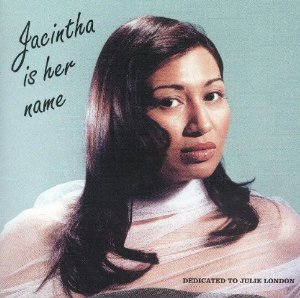 Similarly and consistently, vocals were distinctly more three-dimensional and lifelike. Moreover, notes appeared to flow and linger longer with more completeness in both shadings and timbre. For example, when I put on “Light My Fire” from Jacintha Is Her Name (GRV1014-2), I was startled, first by the immediacy and presence of images, then by the resolution and complexity of her voice. It felt as if I was hearing her for the first time.
Similarly and consistently, vocals were distinctly more three-dimensional and lifelike. Moreover, notes appeared to flow and linger longer with more completeness in both shadings and timbre. For example, when I put on “Light My Fire” from Jacintha Is Her Name (GRV1014-2), I was startled, first by the immediacy and presence of images, then by the resolution and complexity of her voice. It felt as if I was hearing her for the first time.
The ASIs’ magic persisted throughout its range, from top to bottom and from the softest ppp to the most thunderous fff. The Grand Stereo and the Liveline preamplifier are like a formula one race car with the comfort level of the S class Mercedes. It’s a power house with a touch of finesse. Playing large-scale orchestral music, and they won’t disappoint, even on the loudest crescendos, fff. When the music demands drive and momentum, the ASIs simply ask, “How Much?” They have the sheer physicality and muscular delivery of a twelve cylinder engine.
To cut to the chase, the ASI Grand Stereo amplifier and Liveline preamplifier are one of the best solid state combos I have heard in my system or anywhere else for that matter. I can’t really say that they are better than, let’s say, Soulution, Constellation, Behold or Technical Brain because I haven’t heard all of them in my system but I can say that the ASI’s are an extraordinary class of component. Their innovative design and construction are second to none. Despite its sheer power and energy reserves, the way these components handle the smallest intricacies of musical details is, for this admirer, its most impressive attributes. As good as my reference Karans are, in regard to resolution, they’re no match for the ASI.
If you prefer a warmer sound, the Reimyo KAP-777 and the CAT-777 MKII combo ($50k total, which I reviewed last year), are also superb sounding. One of the few solid-state and tube combinations that make great synergy. Strings and voices were uncannily real, to the point I gave the Reimyo my 2012 “Most Wanted Component” award. Voices and instrumental textures are a touch fuller and more on the musical side than the ASI gear. Don’t get me wrong I could live with any one of these components: they are truly the real deal and world class in every regard. As far as solid state gear is concerned, the ASI sets the bar of sonic excellence to new heights.
Bravo! My hat’s off to Franck Tchang and Milan Karan for creation of these new masterpieces. The Grand Stereo amplifier and the Liveline preamplifier are my new reference components and hereby earn my Stereo Times 2013 “Most Wanted Components” award! Highly recommended!


Specifications:
Grand Stereo ($39,500.00)
Power: 650 W into 8 Ohms, 1000 W into 4 Ohm, 1800 W into 2 Ohms
Maximum instantaneous current: 120A peak
Maximum voltage swing: 70V
Class A active bias operation
Frequency response: DC-500 Khz+0/-3 dB
LiveLine reference preamplifier ($30,000.00)
Frequency response: DC-600 Khz +0/-3 dB
Channel separation
Distortion:1V rms output level into a 600 ohm impedance is 0.0001% THD across the Audible bandwidth and 0.0001% IMD
Inputs: 3 RCA and 3 XLR
Output: 2 XLR
Size: Main Unit: 19.9” x 14.2” x 4.7”
Power supply: 19.9” x 13 x 4.7”
Weight: Main Unit: 26.4 lbs
Power supply: 28.6 lbs
Contact:
Website: http://www.francktchang.com/electronics.html
Stereo Times Masthead
Publisher/Founder
Clement Perry
Editor
Dave Thomas
Senior Editors
Frank Alles, Mike Girardi, Russell Lichter, Terry London, Moreno Mitchell, Paul Szabady, Bill Wells, Mike Wright, and Stephen Yan,
Current Contributors
David Abramson, Tim Barrall, Dave Allison, Ron Cook, Lewis Dardick, John Hoffman, Dan Secula, Don Shaulis, Greg Simmons, Eric Teh, Greg Voth, Richard Willie, Ed Van Winkle, Rob Dockery, Richard Doron, and Daveed Turek
Site Management Clement Perry
Ad Designer: Martin Perry



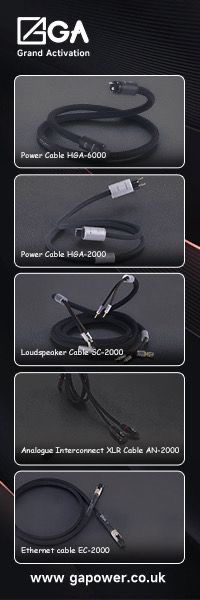

Be the first to comment on: ASI Grand Stereo amplifier and Liveline Preamplifier